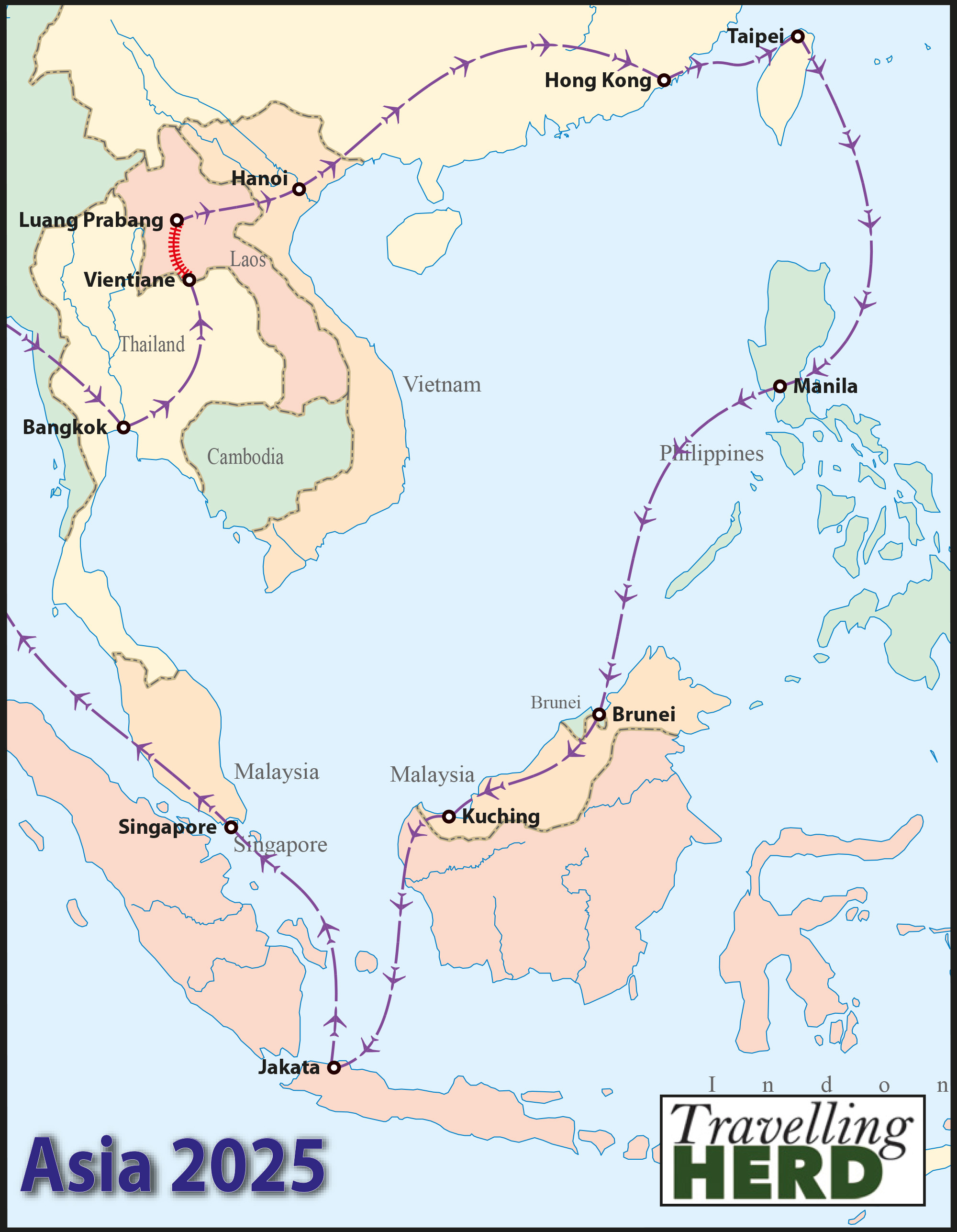Read this blog: The one where Robert doesn’t want to put his trousers on
Wednesday 19th February 2025
Luang Prabang lies on a peninsula formed by the confluence of the Mekong River and its tributary the Nam Khan. It is the former royal capital of Laos. In 1545 the administrative capital was moved to Vientiane but the Lau royal family continued to live here until the communist takeover in 1975. Now the cultural Capital of Laos, Luang Prabang has a plethora of temples and colonial-style buildings along Sakkaline Road.
We woke to torrential rain [see Video of the day] which was fortunately short-lived and cleared the air making the day seem slightly cooler. After breakfast we set off to see a few sites: Matilda dressed appropriately for any temple visits and Robert with his elephant temple trousers in his bumbag.
The sky still looked threatening over the park where the statue of President Souphanouvong stands. He seems to have been something of a contradiction. Born a member of the Laos royal family in Luang Prabang, and originally known as Prince Souphanouvong he became the first President of the Lao People’s Democratic Republic [Lao PDR] serving between 1975 and 1991. According to the laoslife.info website, when the Pathet Lao Government abolished the monarchy ’the King and the Crown Prince were sent to a re-education camp and never heard of again”.
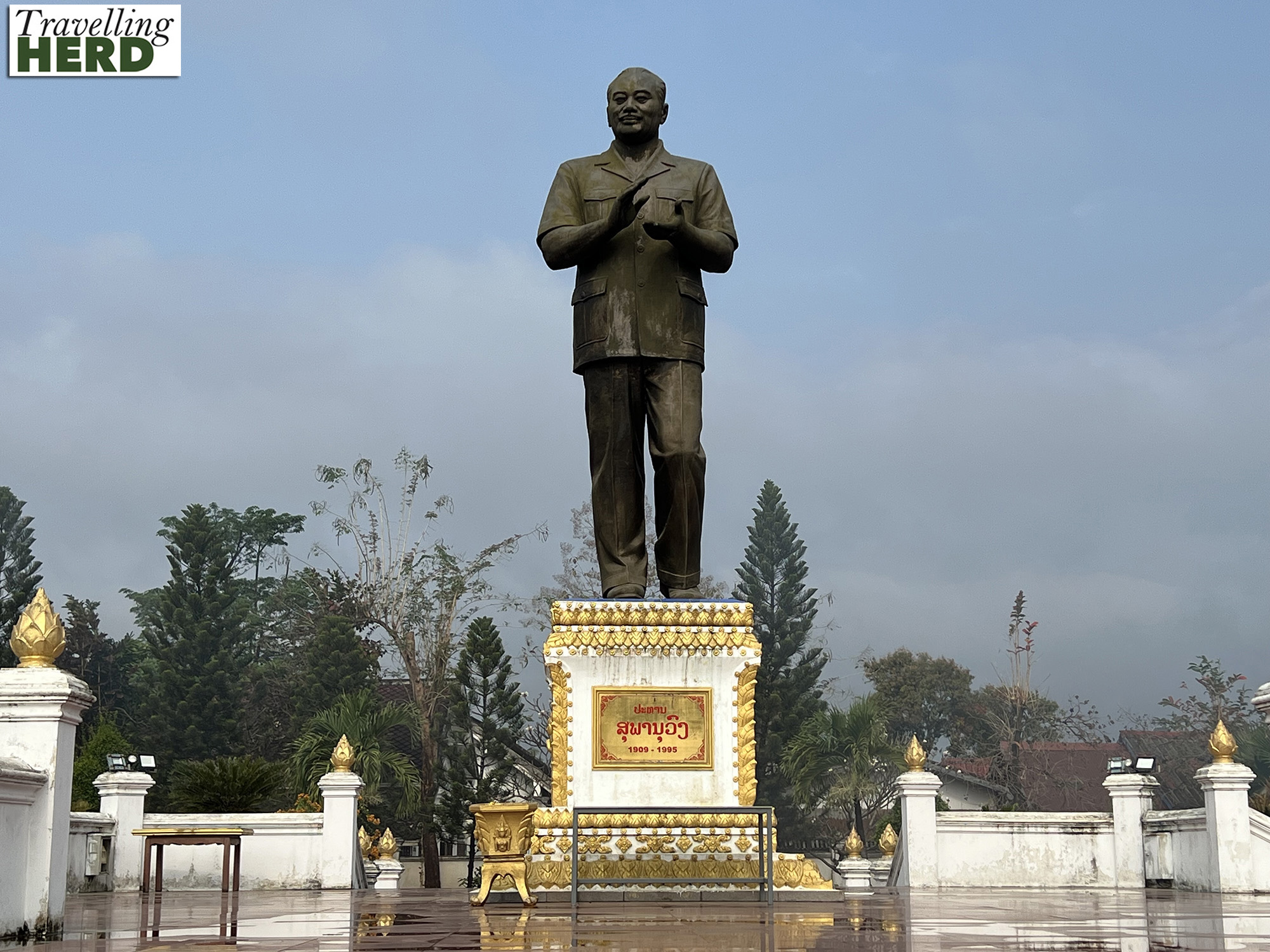
Having visited the COPE Visitor Centre in Vientiane, we felt we could not miss the UXOLAO Centre which is adjacent to the park containing the statue of President Souphanouvong.
Whilst COPE deals with the human stories of those needing prosthetics, the UXOLAO Visitor Centre focuses on the work to remove unexploded ordinance [UXO]. This work involves 3,000 men and women working across the whole country. The workforce is organised into four areas or teams with support staff providing administrative, information management, transport and medical services.
Since 2015, when the survey was introduced as part of the process, the Survey Team has identified the locations of UXOs, using information from the village communities, local government and old bombing records. Areas known to have been hit by cluster bombs are prioritised as these have the highest density of UXO and are the most common sites of accidental injury. GPS is used to identify the precise position of UXO and these sites are marked. A technical survey involves marking the land in a grid: team members scan the grid with a metal detector, marking the location of all and any metal found.
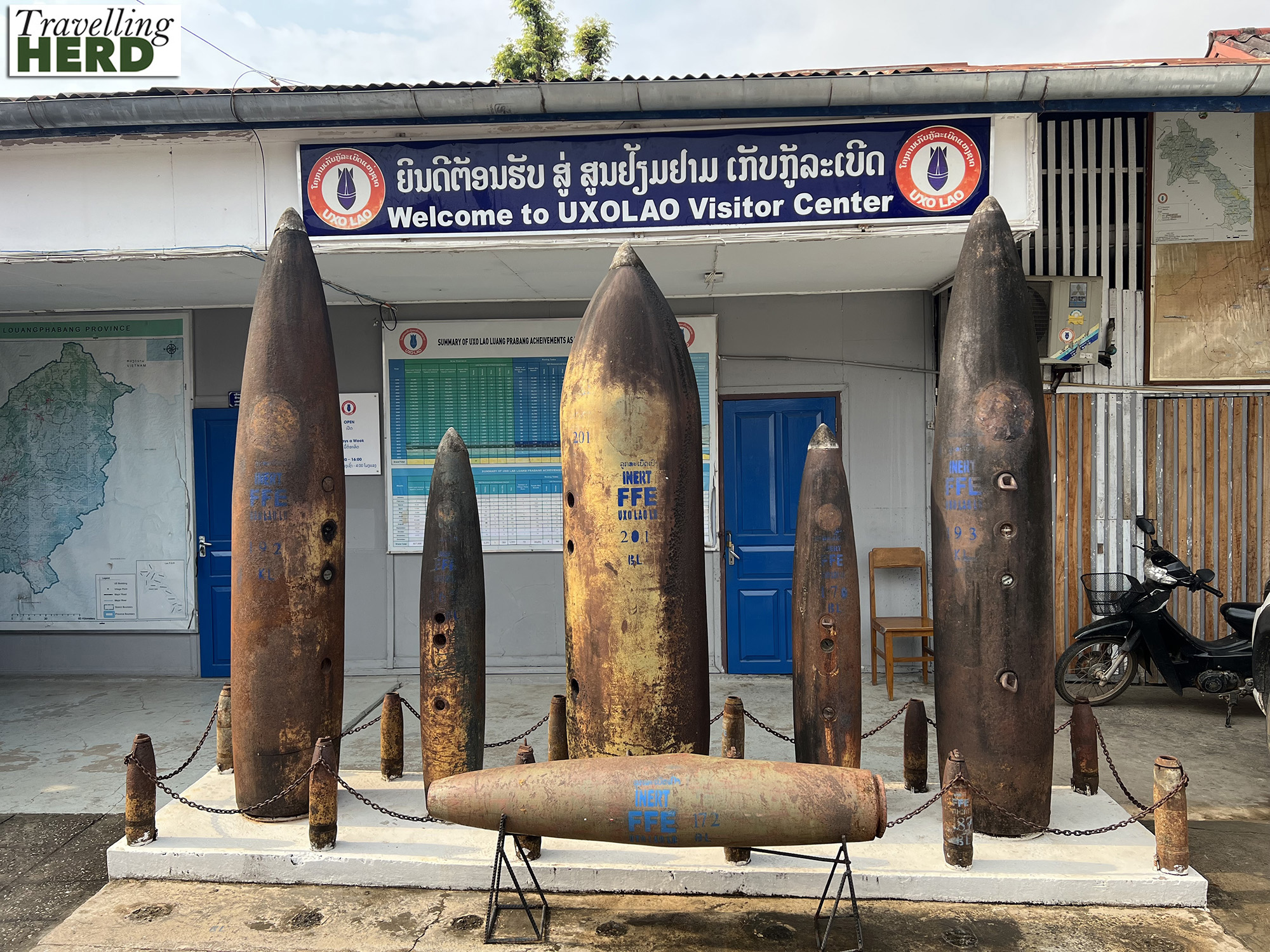
The Clearance Team is then responsible for clearing UXO-contaminated areas and destroying UXOs identified by survey while the Roving Team provides an emergency response to remove and destroy any UXOs which have been discovered. After the surveys and clearance are completed, the information is saved to a national database.
The Explosive Ordnance Risk Education (EORE) Team aims to minimise injuries by educating the community about the risks. These include lighting fires directly onto the ground as the heat can detonate a bombie below the surface.
Making the land safe makes it possible to improve the infrastructure by building new roads, schools and hospitals.
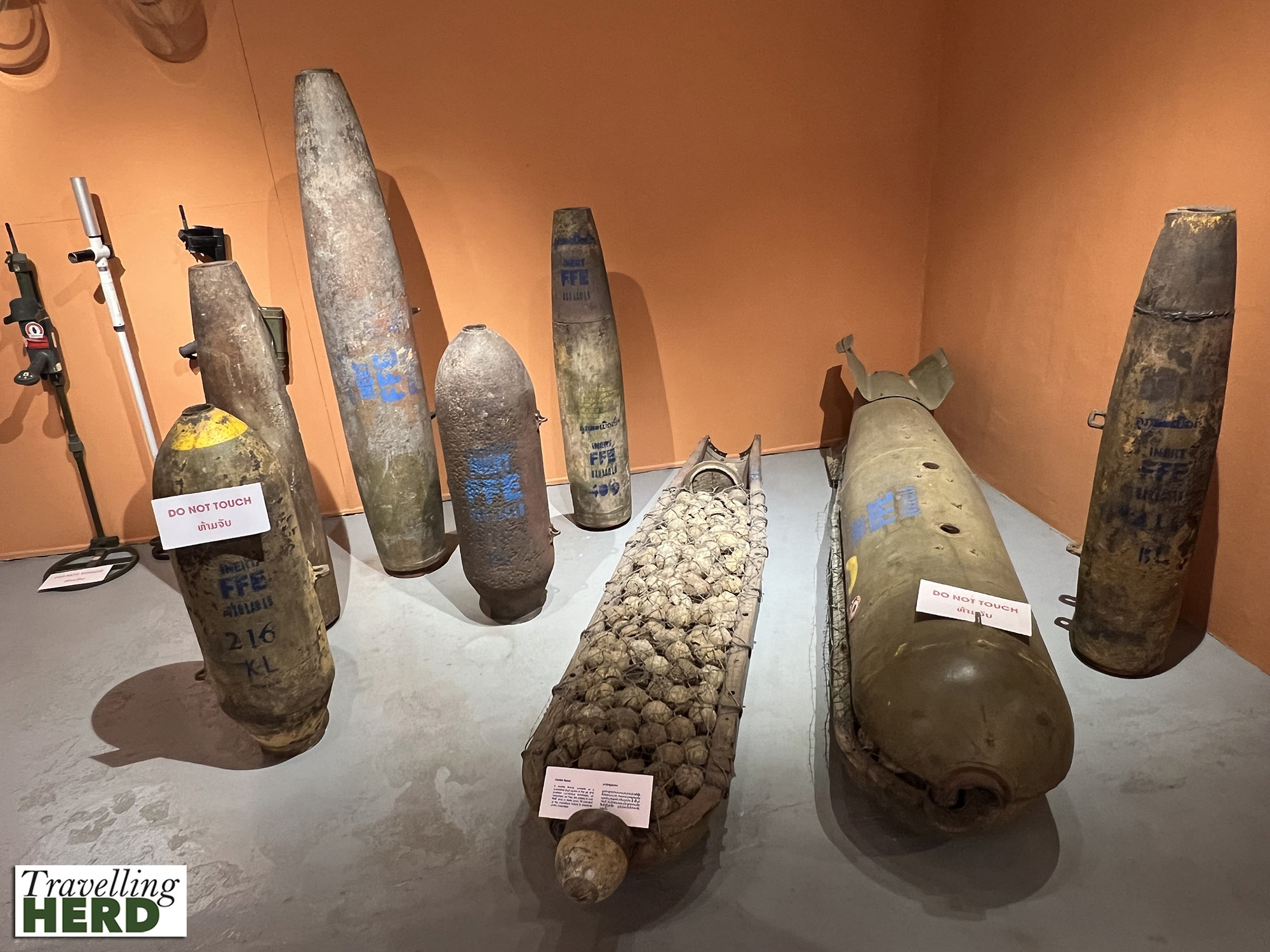
It was shocking to learn that although US Forces had rules of engagement for their air raids in Vietnam which included not bombing within half a kilometre of a temple, as the bombing in Laos was a secret campaign targeting the Ho Chi Minh trail, no such limits were ever imposed.
As we learnt at COPE, an estimated 80 million pieces of UXO are still contaminating the land. Currently the teams are managing to clear 50km2 annually against a target of 1000km2 and there is much work still to be done. Once again there was no entry fee but, of course, we made a donation.
Robert’s route then took us past Wat Ahamoutamathany: he decided he did not want to go in but Matilda took a look inside.
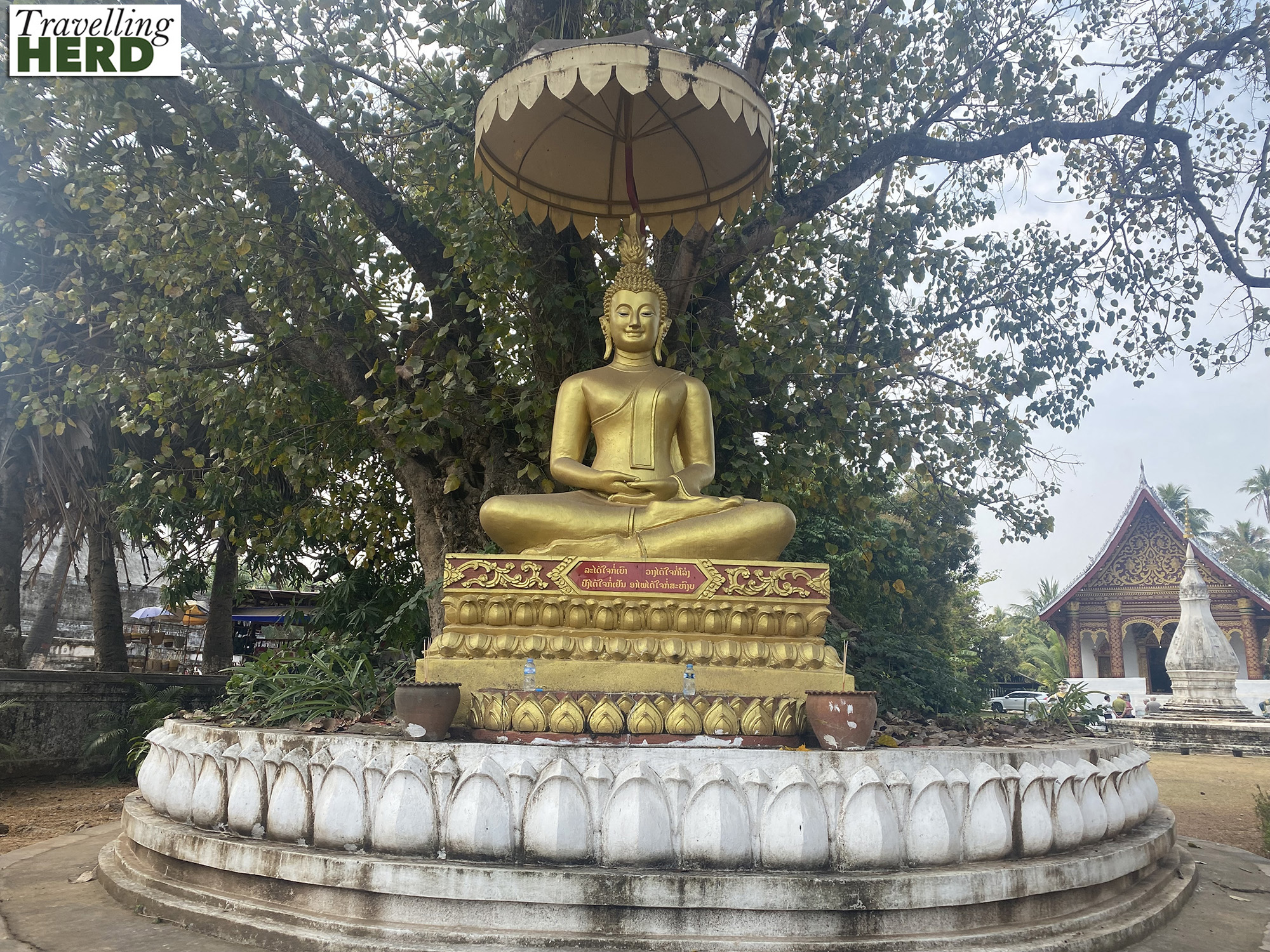
The sim here has Corinthian style columns and statues of characters from the national epic of the Lao people, known as the Phra Lak Phra Lam, guarding the entrance.
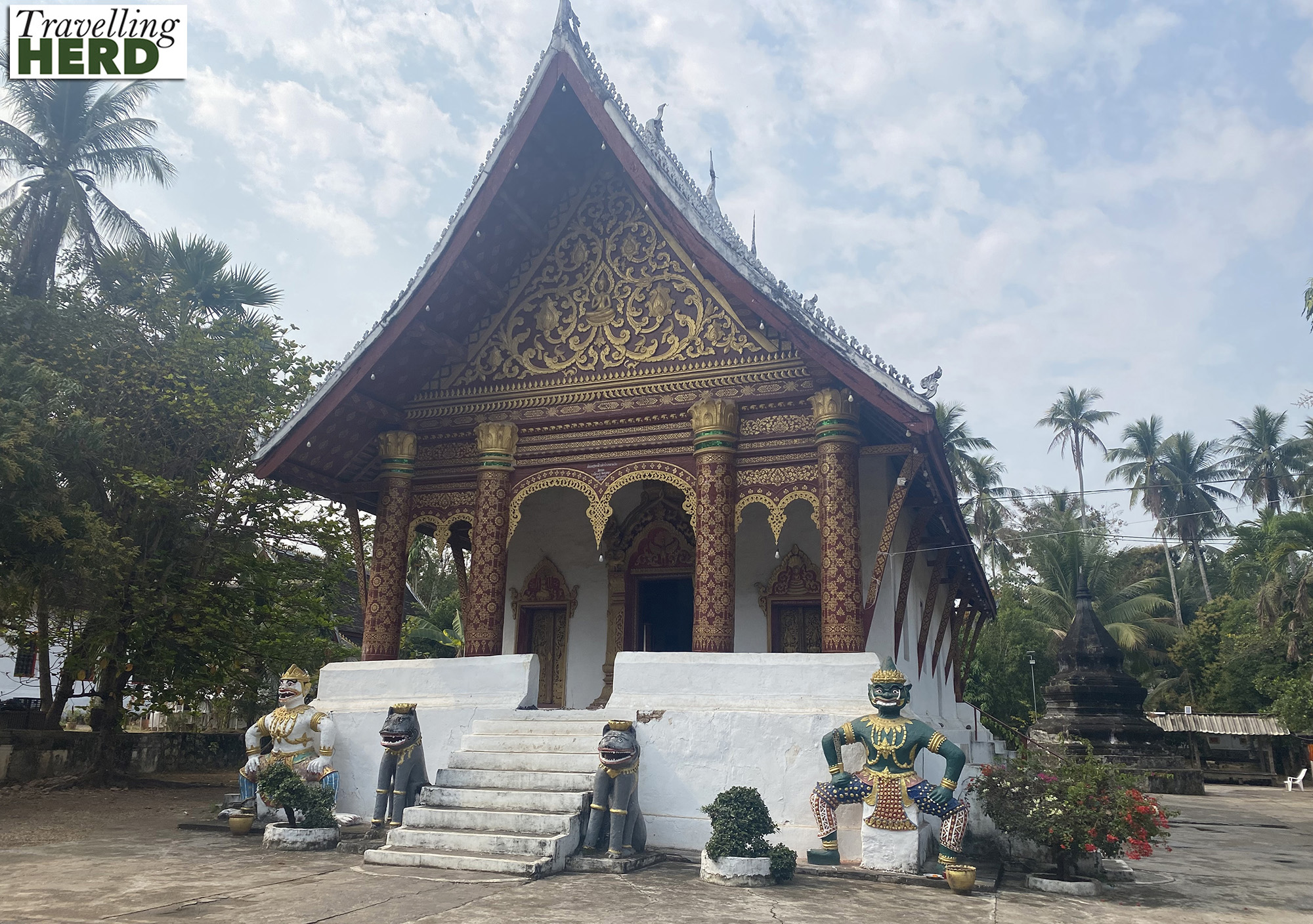
From outside the Wat Ahamoutamathany temple compound there is a view up to the That Chomsi stupa on Mount Phou Si.
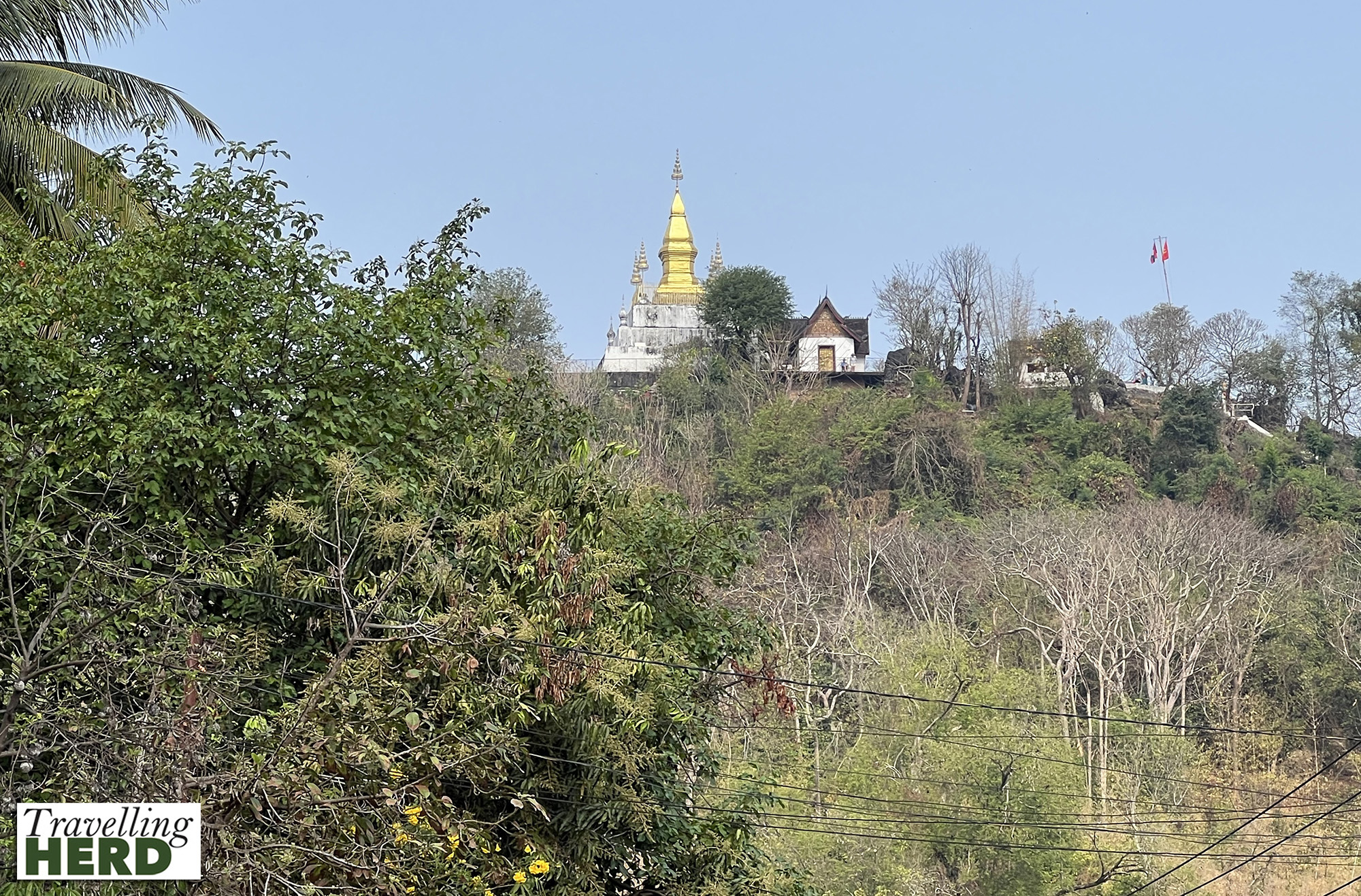
Deluded by the comparative cool after the morning rain, Matilda suggested climbing Mount Phou Si. There are three different routes to the top with one set of steps starting close to the Royal Palace Complex; one from the Nam Khan River side and one from behind Wat Siphoutabath but whichever route you choose to take, it is a long way up in over 30ºC heat. It seemed to get hotter as we climbed.
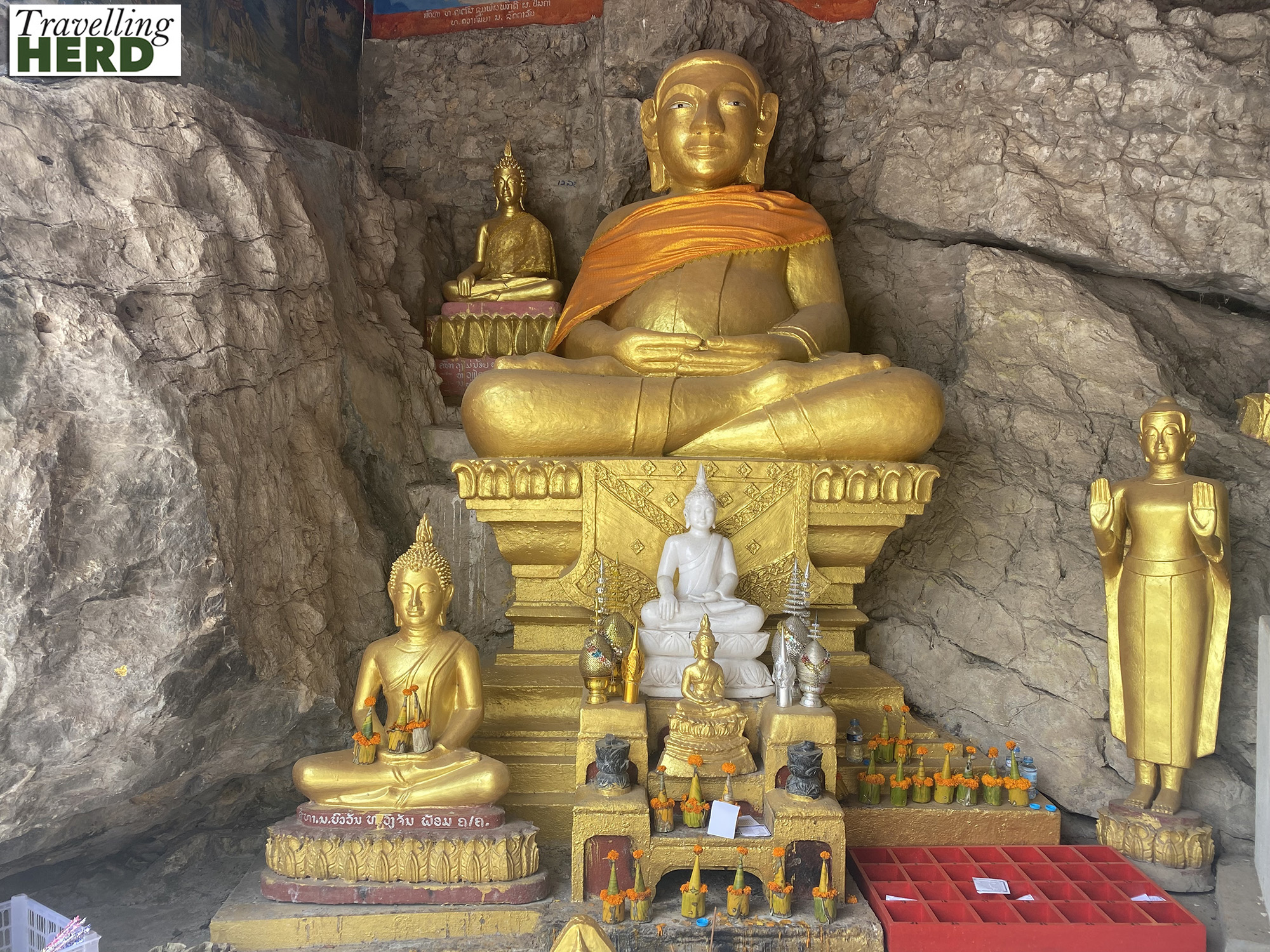
Painted golden naga lie on top of the walls encouraging climbers onwards and upwards.
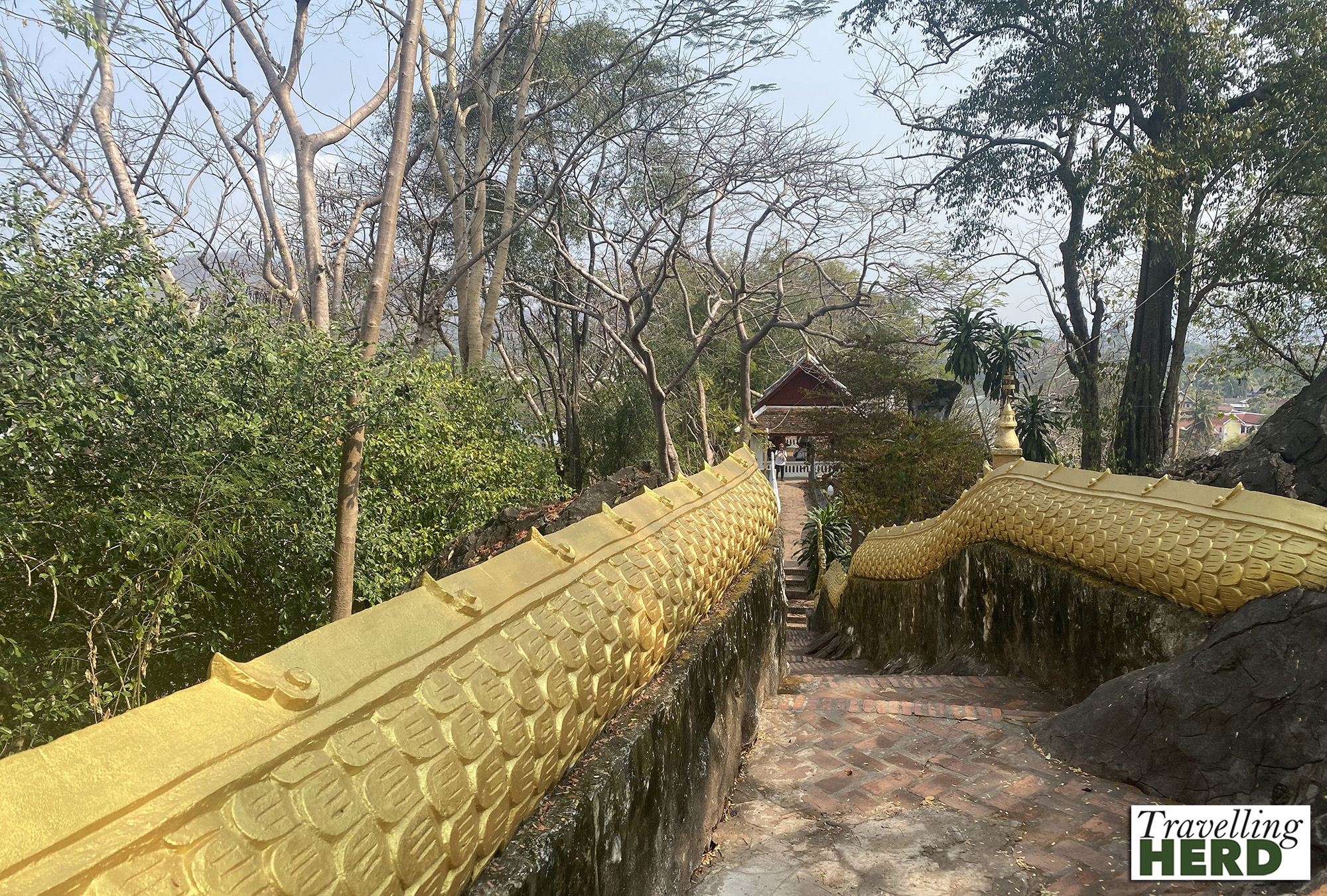
There are temples . . .

. . . and statues on the lower slopes.
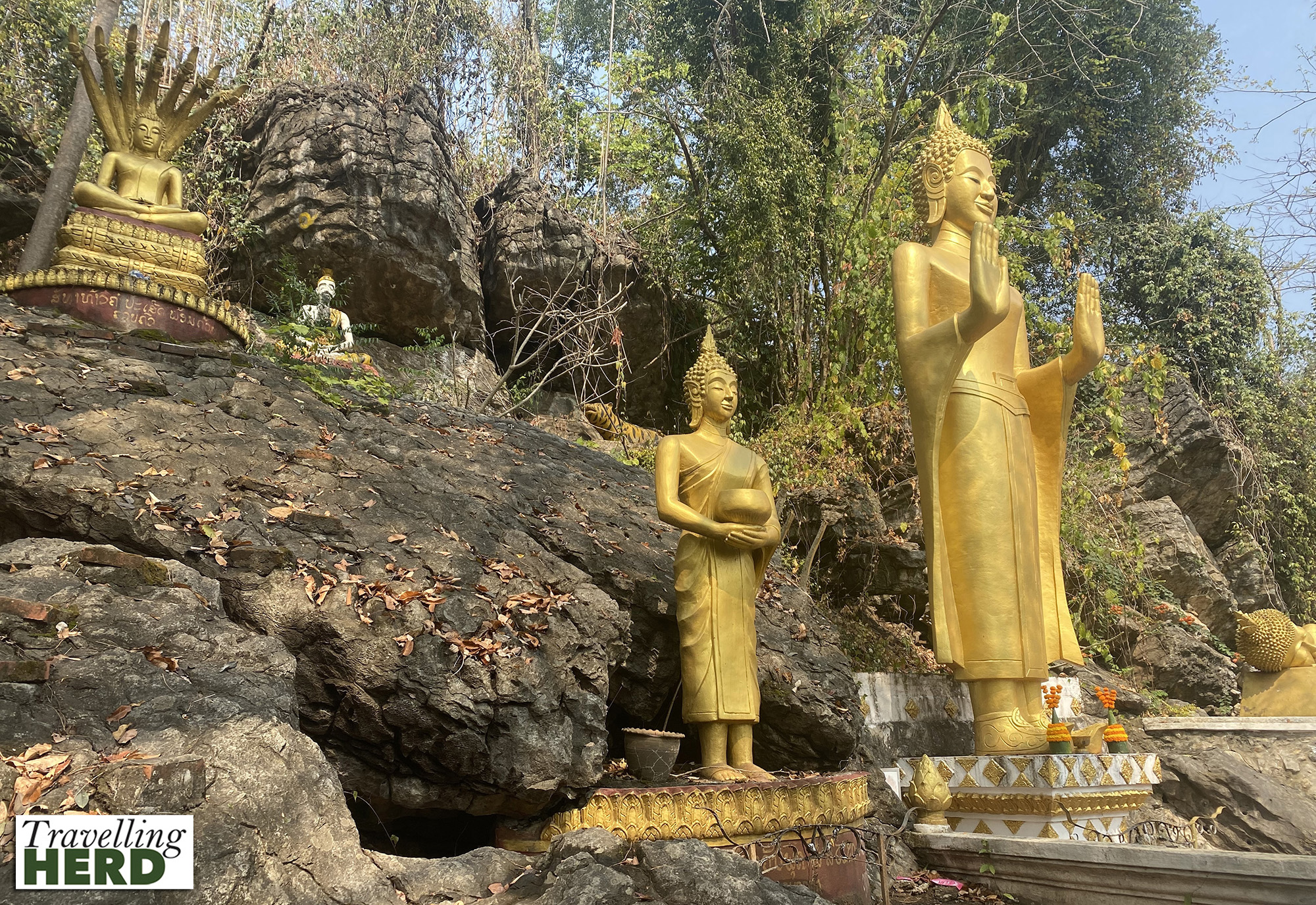
Just when you think you might have made it to the top of the 328 steps, another flight reveals itself.
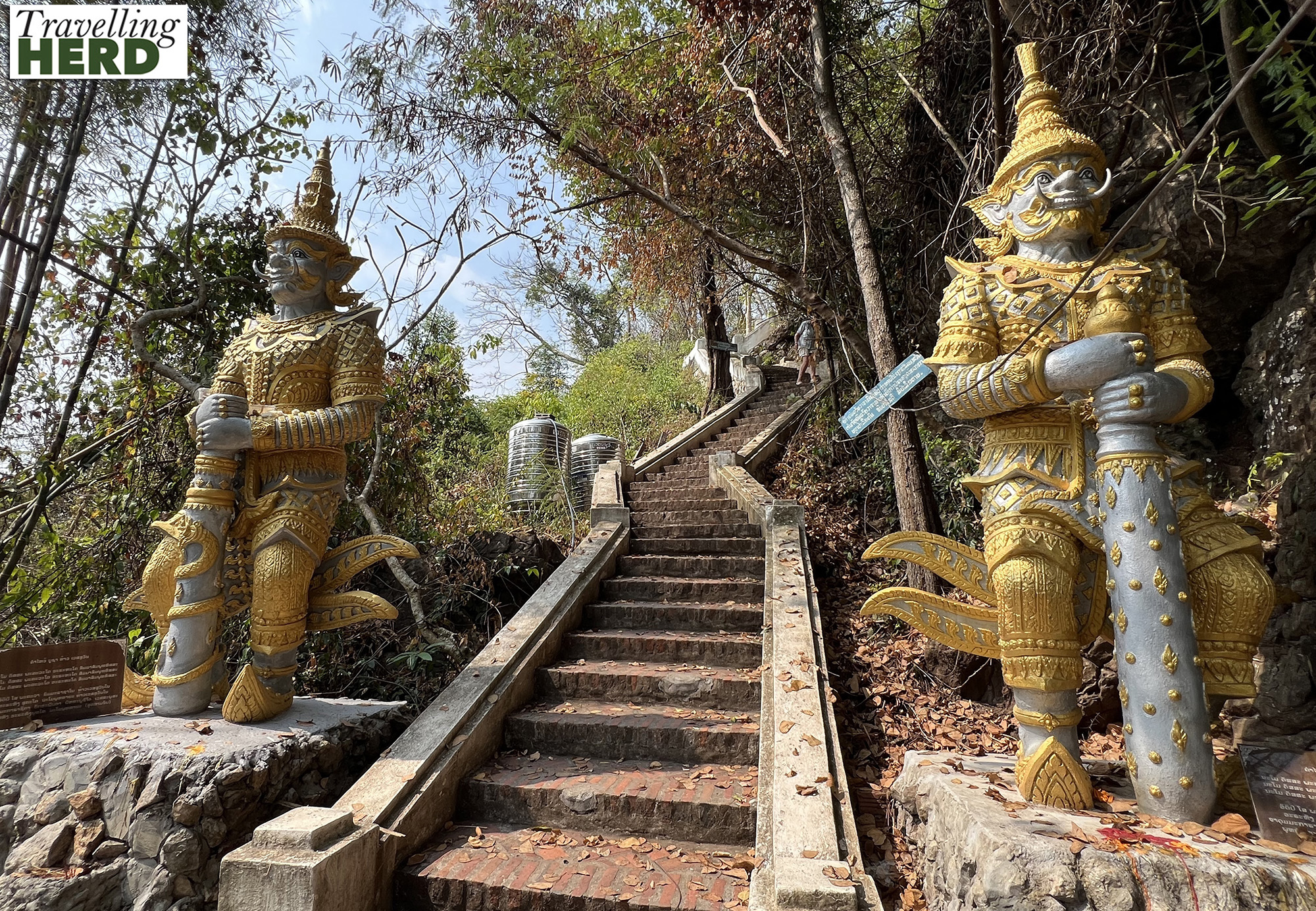
Rising 79ft [24m] above the hill, the stupa gives impressive views [see Selfie of the day]. . .
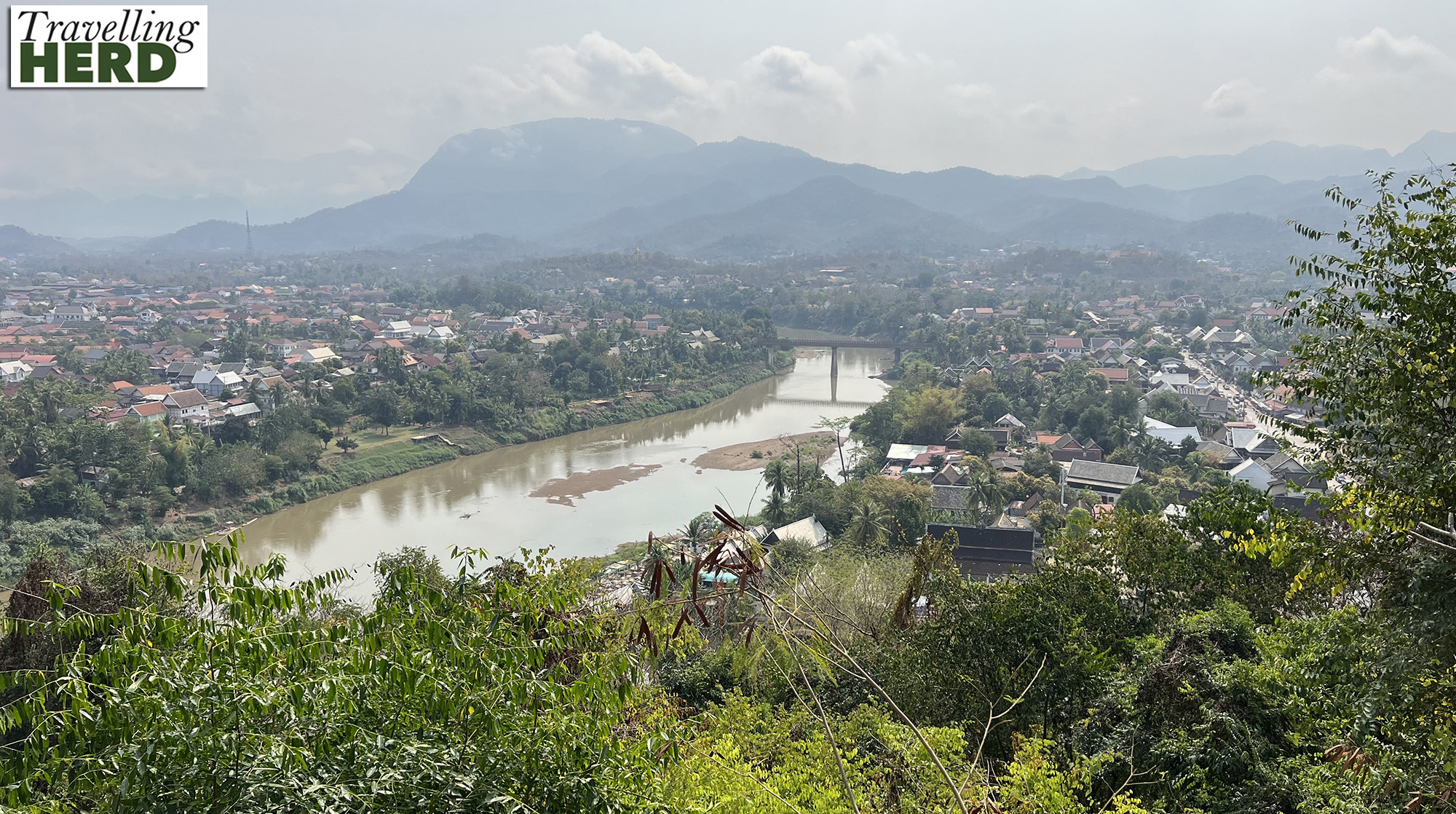
. . . of both rivers.
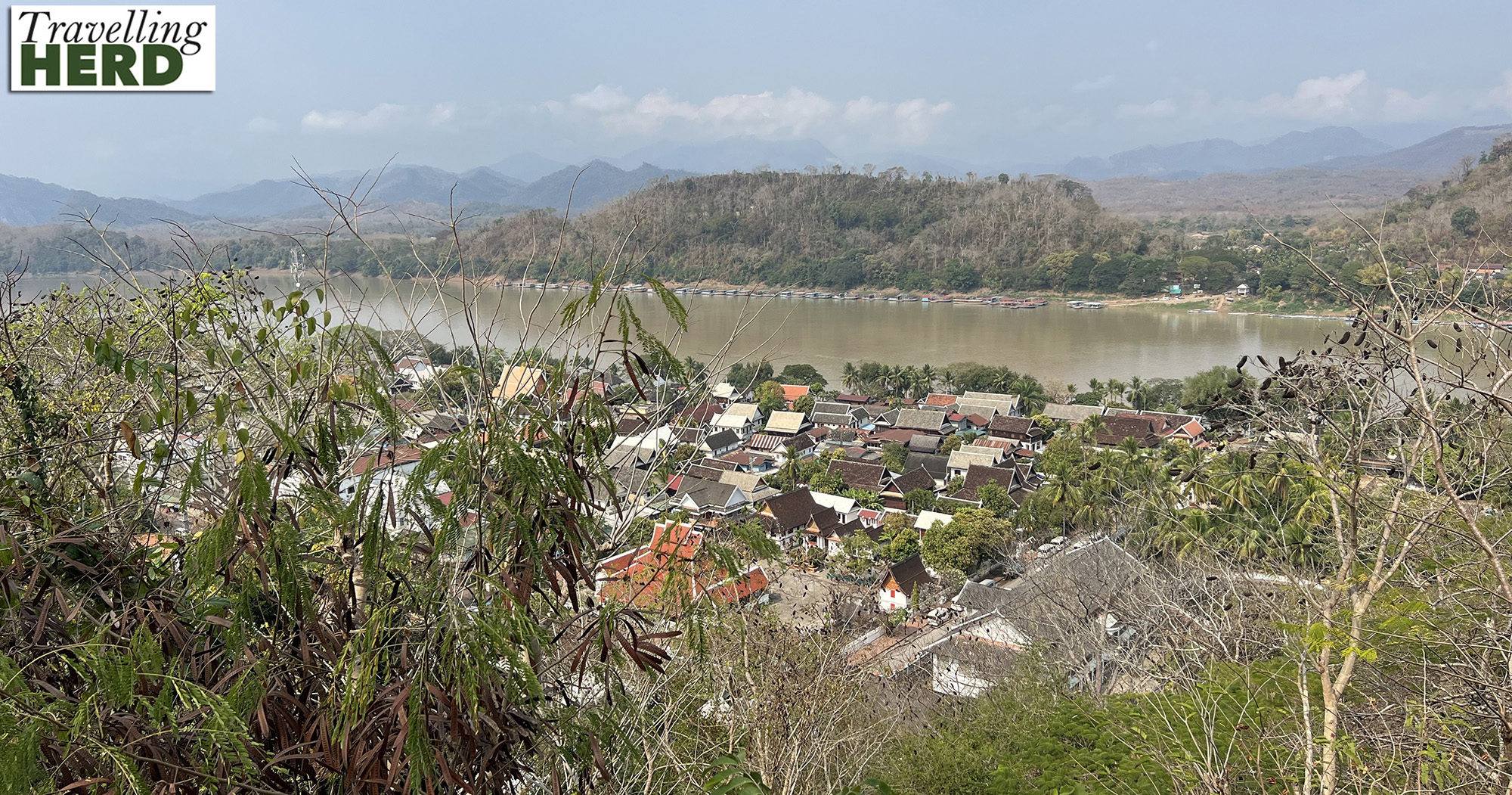
The That Chomsi stupa dates from 1804 and some guide books say that the best views are to be had from a distance. We couldn’t possible comment.
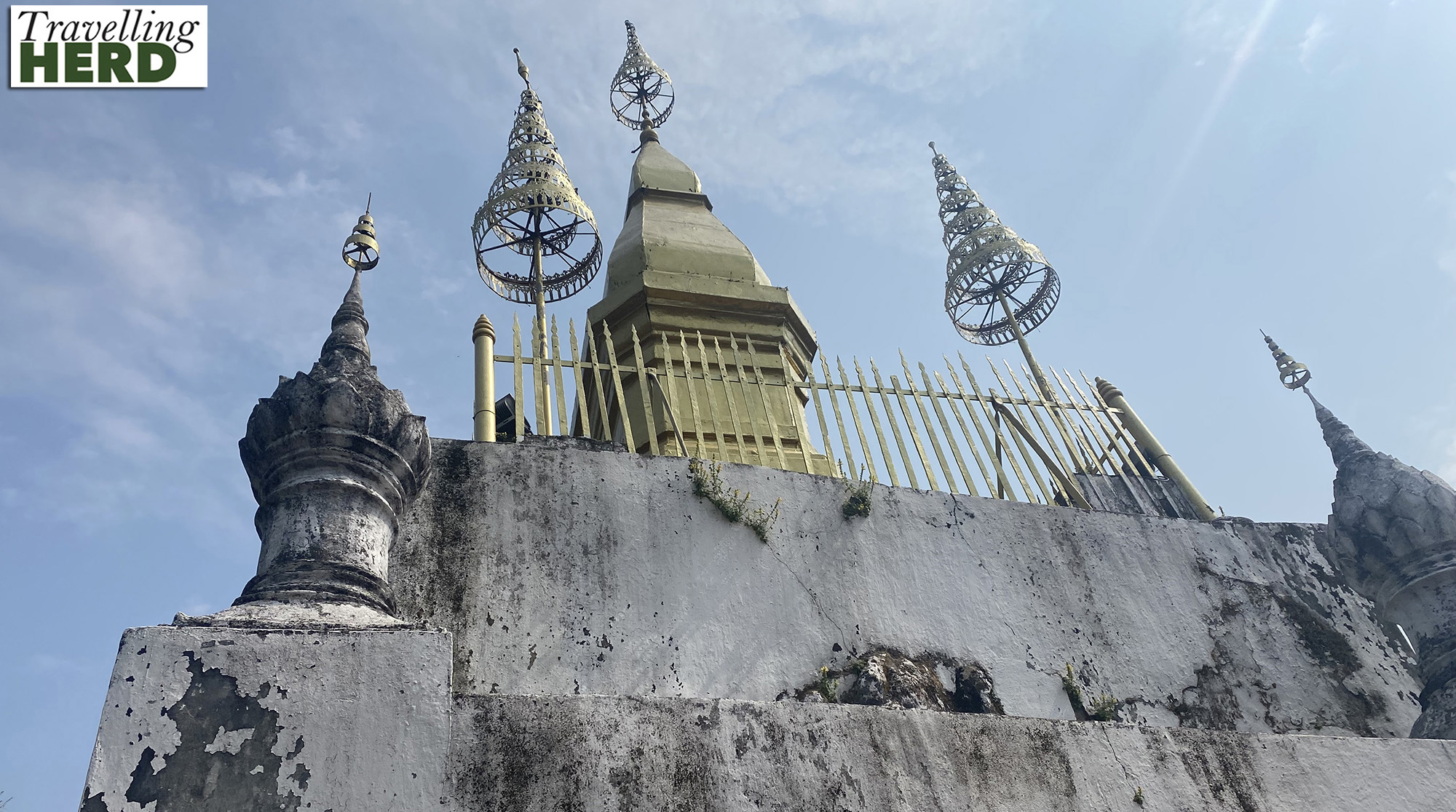
A small building protects the imprint of Buddha’s footprint on top of the hill but looking from bright sunlight into the dark we found it difficult to make out.
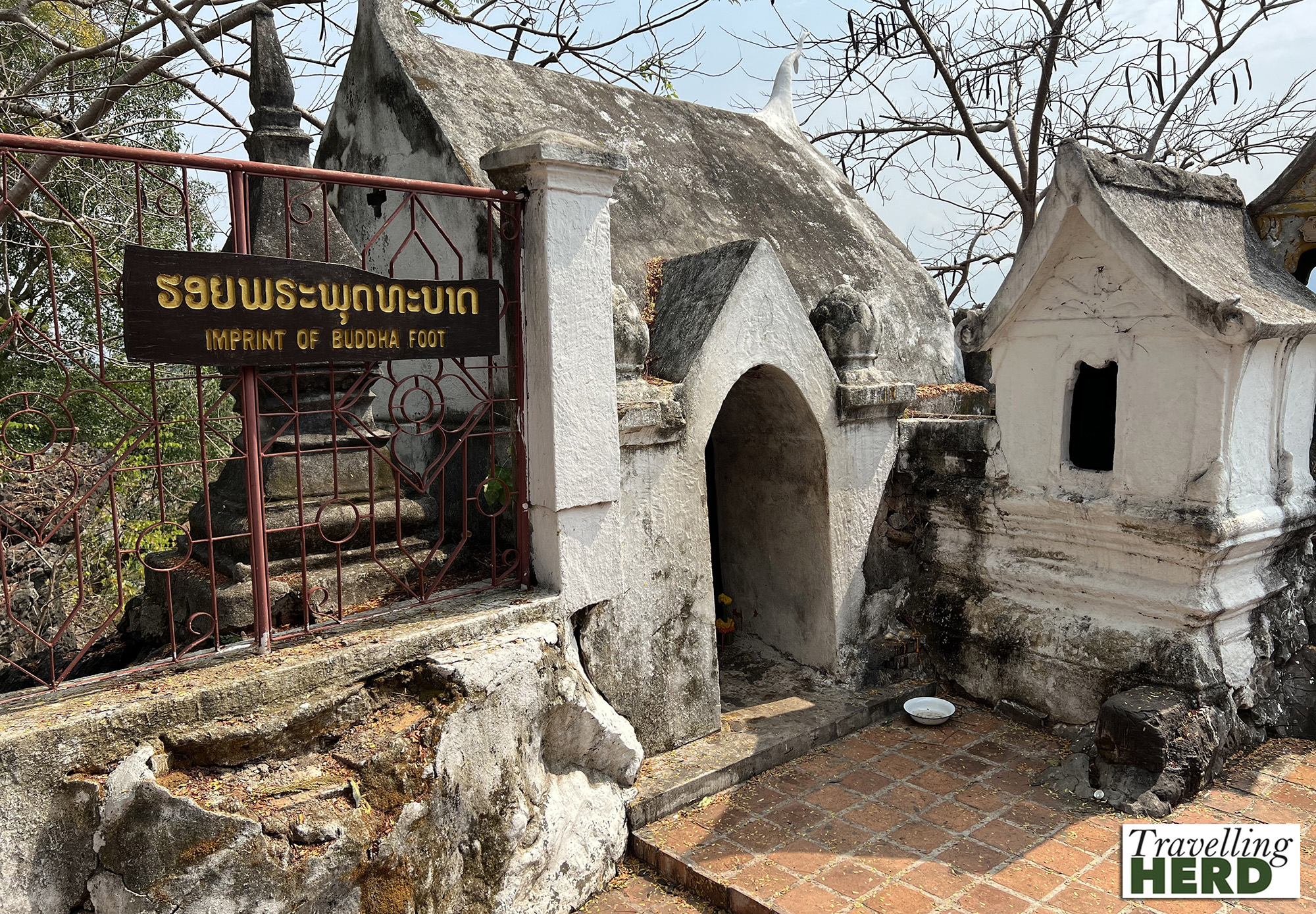
Matilda wanted to go a different way down from the one we had ascended by but that did not fit in Robert’s pre-planned route so we retraced our steps and stopped at Le Banneton Café and French Bakery on Sakkaline Road. Matilda chose a delicious pear and almond pastry and a reviving coffee.
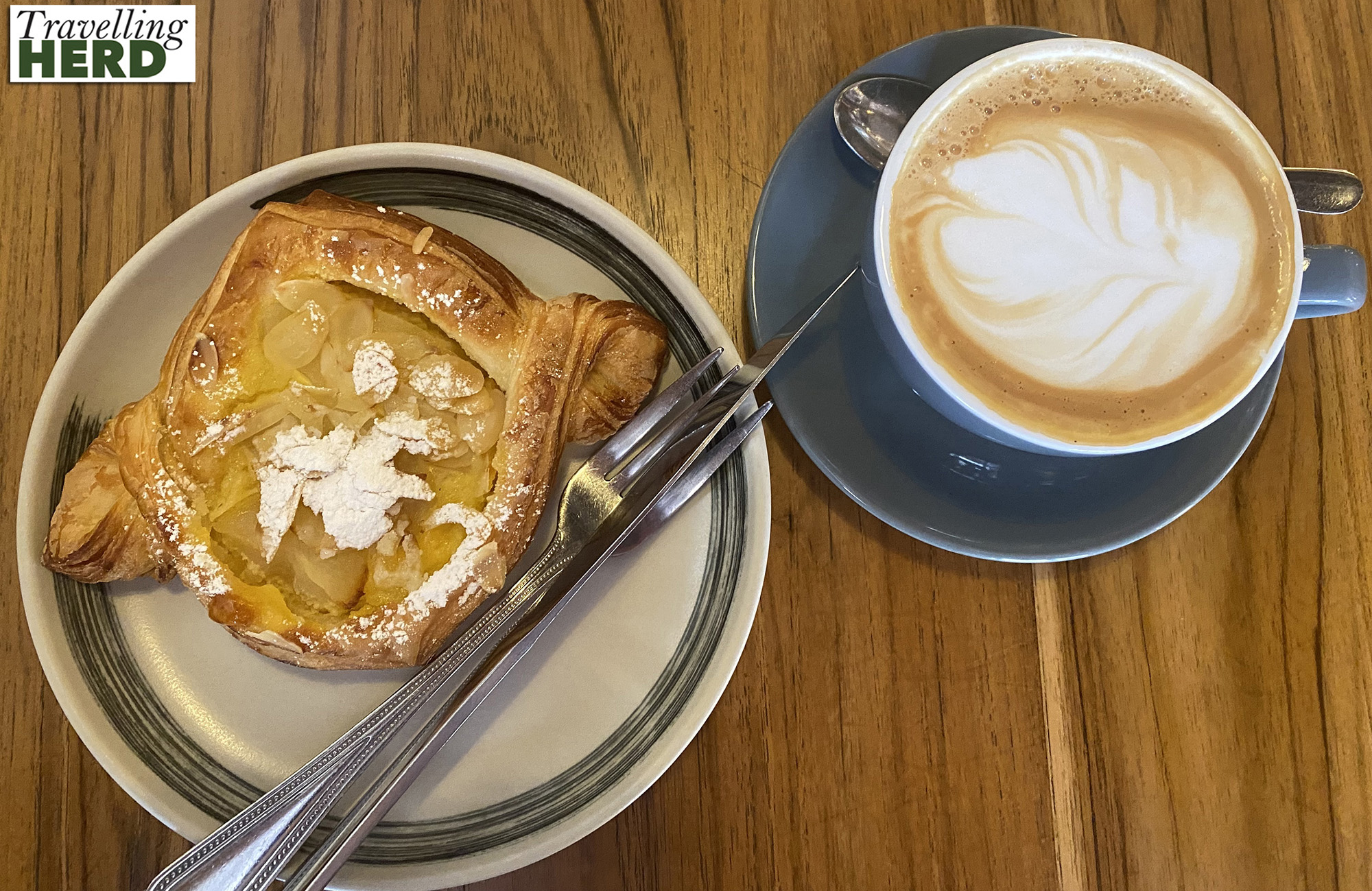
Revived and feeling cooler, we continued along Sakkaline Road to Wat Xieng Thong, which translates as Gold City Monastery. The multi-tiered roof is typical of sims in Luang Prabang.
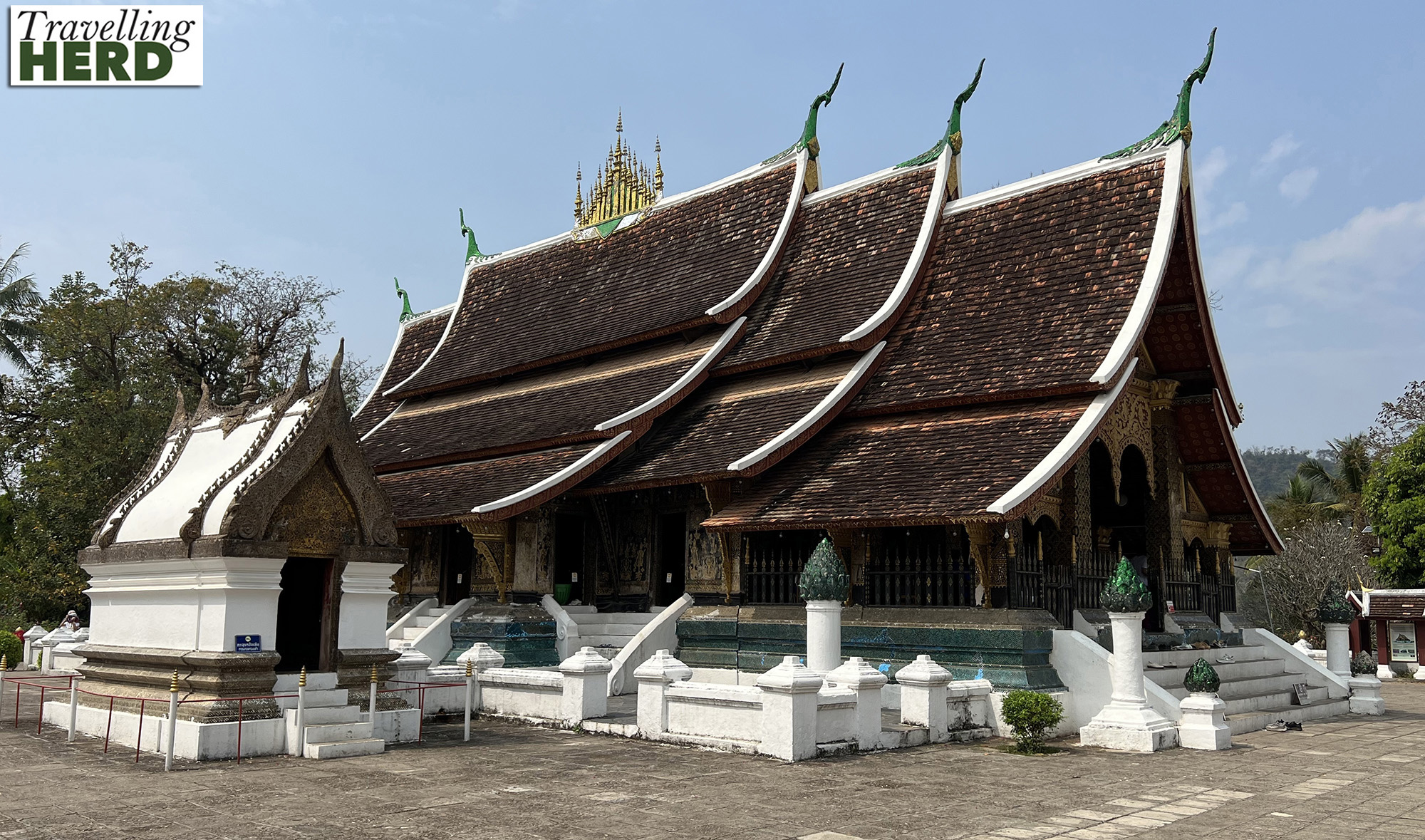
Constructed in 1559-60 this Wat is seen as an important symbol of Laos’ religious heritage and several Lao kings have been crowned in the sim here. A number of the buildings are decorated with vibrant coloured glass mosaics.
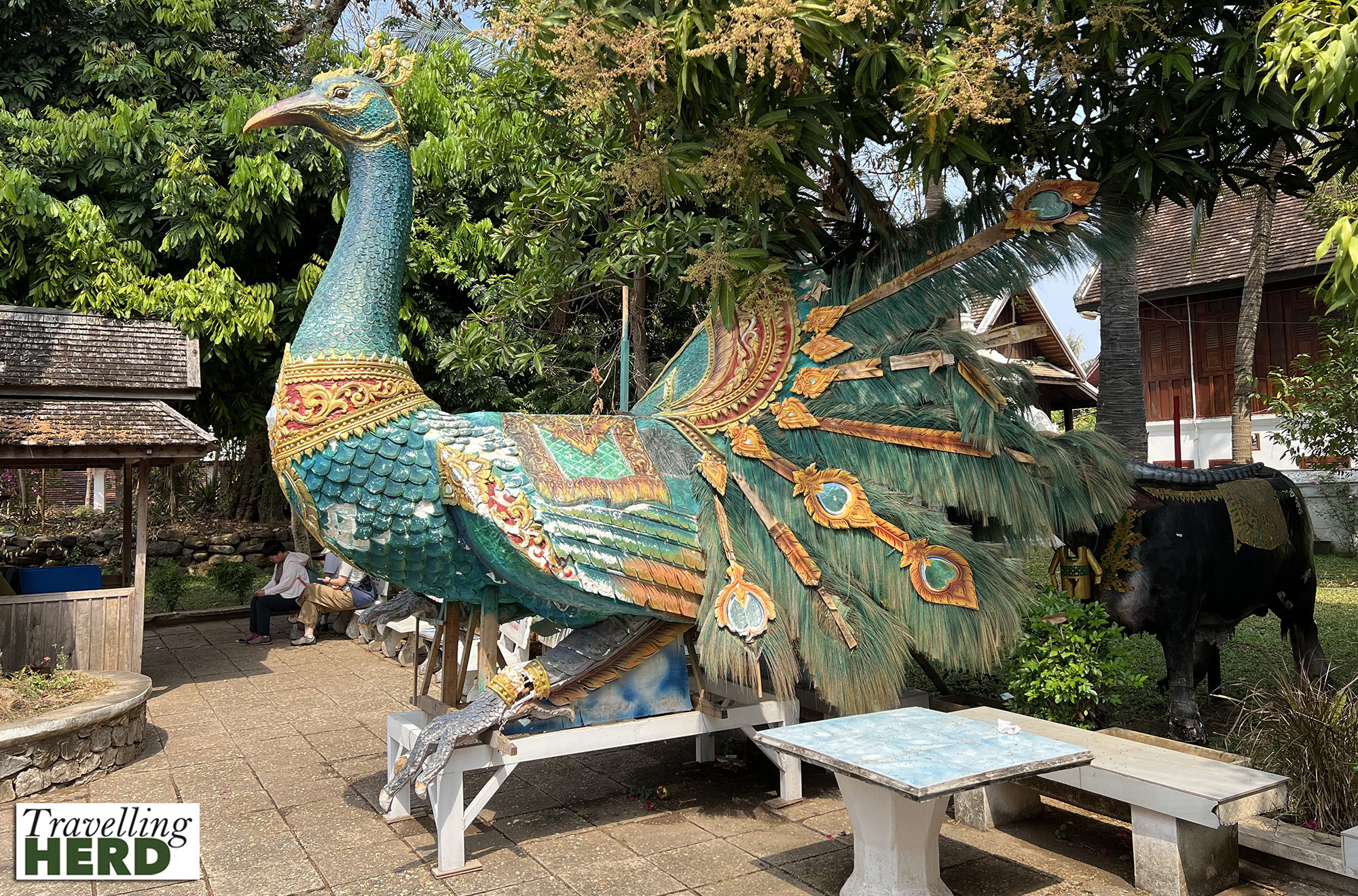
Near the eastern gate stands the 12 metre high Royal Funerary Carriage House which, as the name suggests, contains the royal funeral carriage as well as urns containing the remains of various members of the royal family. As you enter you are faced by the five naga which adorn the prow of the Funerary Carriage itself.
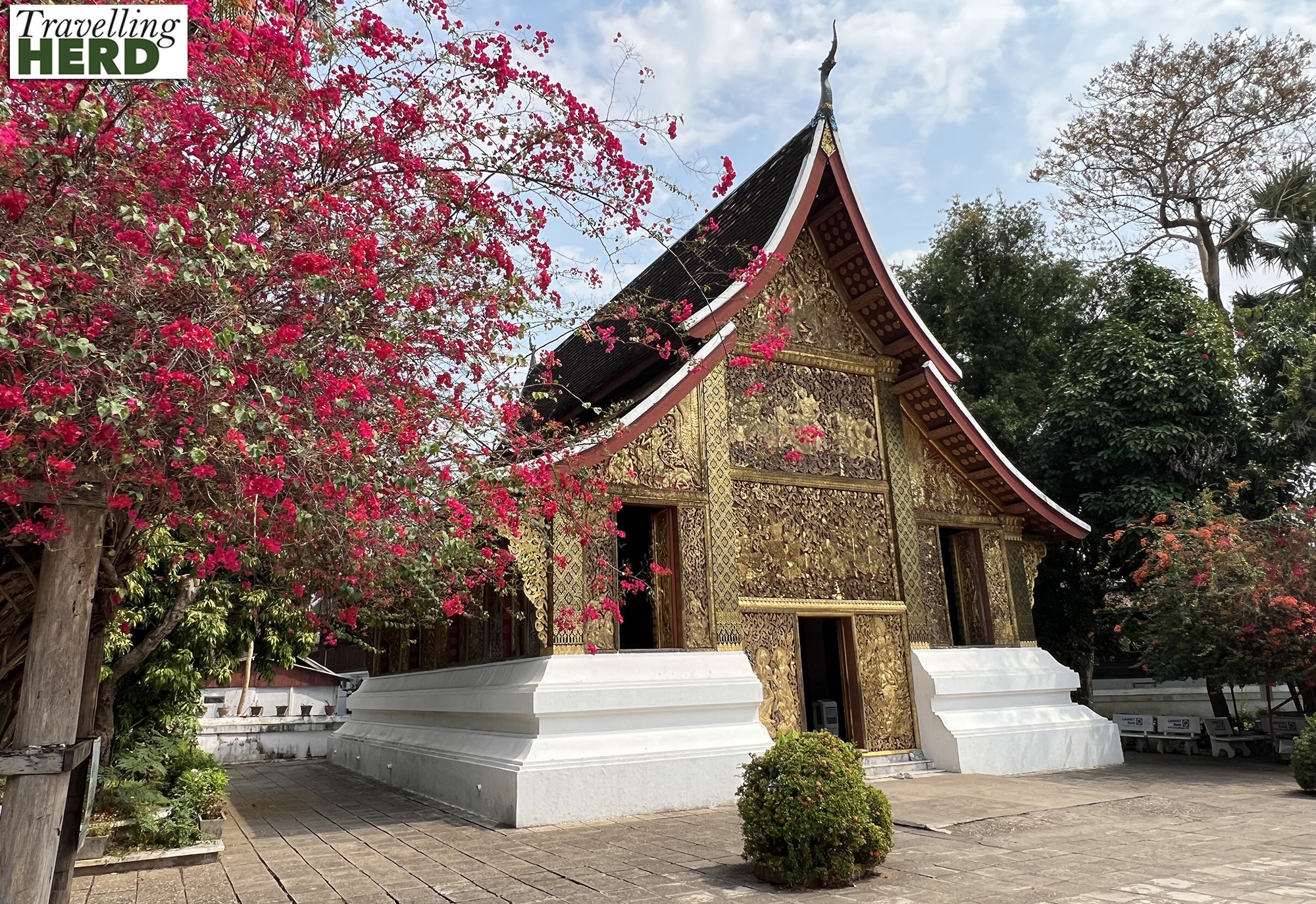
The grounds include smaller religious buildings and stupas.
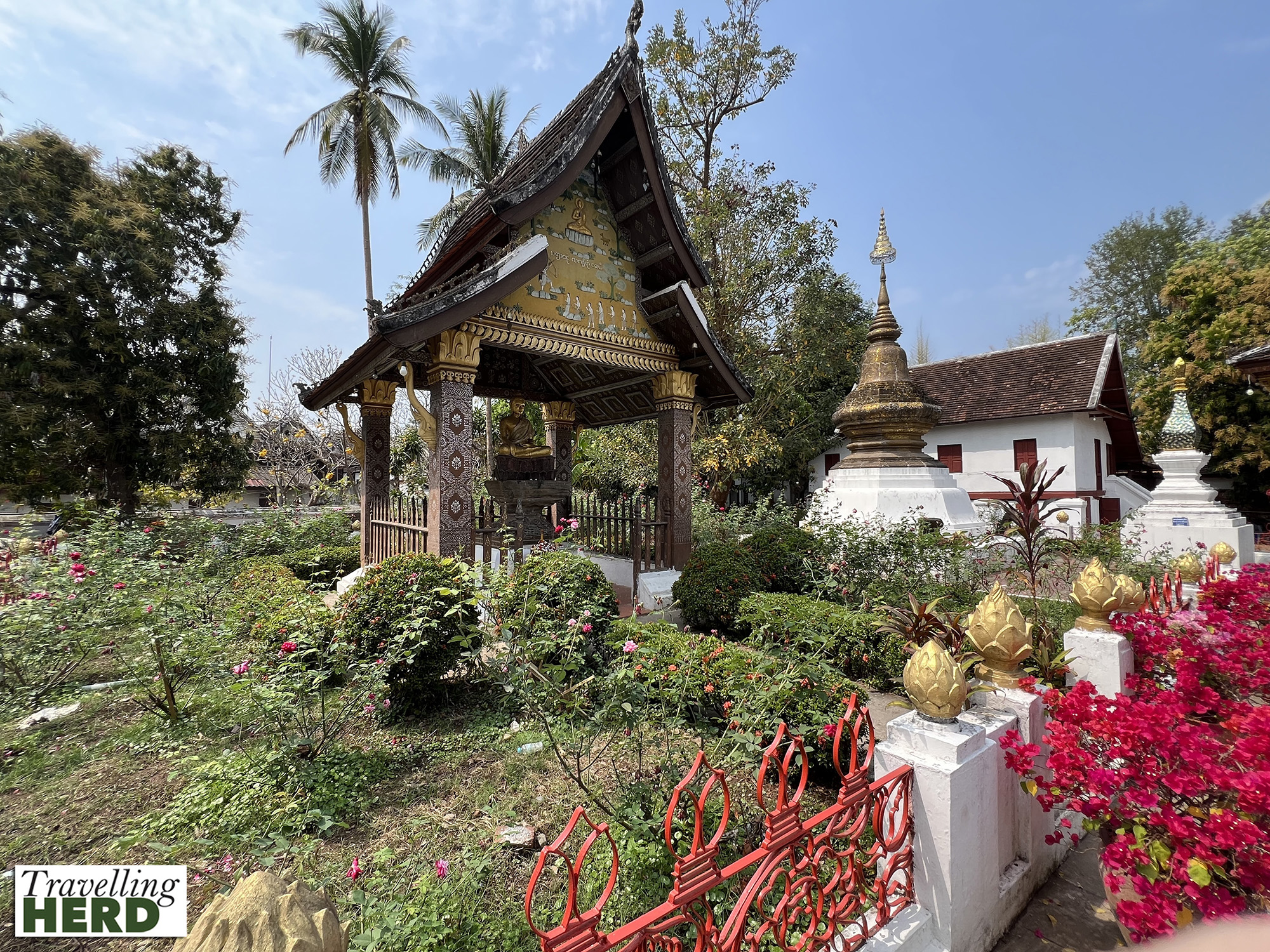
Sai Bat [sometimes Tak Bat] or Morning Alms is a long-standing Lao Buddhist tradition. Every morning at dawn Buddhist monks leave their monasteries and process to receive alms from people kneeling by the side of the road who wish to donate. The offerings are given and received in silence and usually consist of carefully shaped portions of sticky rice. Sai Bat normally takes place at dawn so unfortunately we never arose early enough to see the silent parade of saffron-robed monks but we did see the alms offerings left on the temple wall.
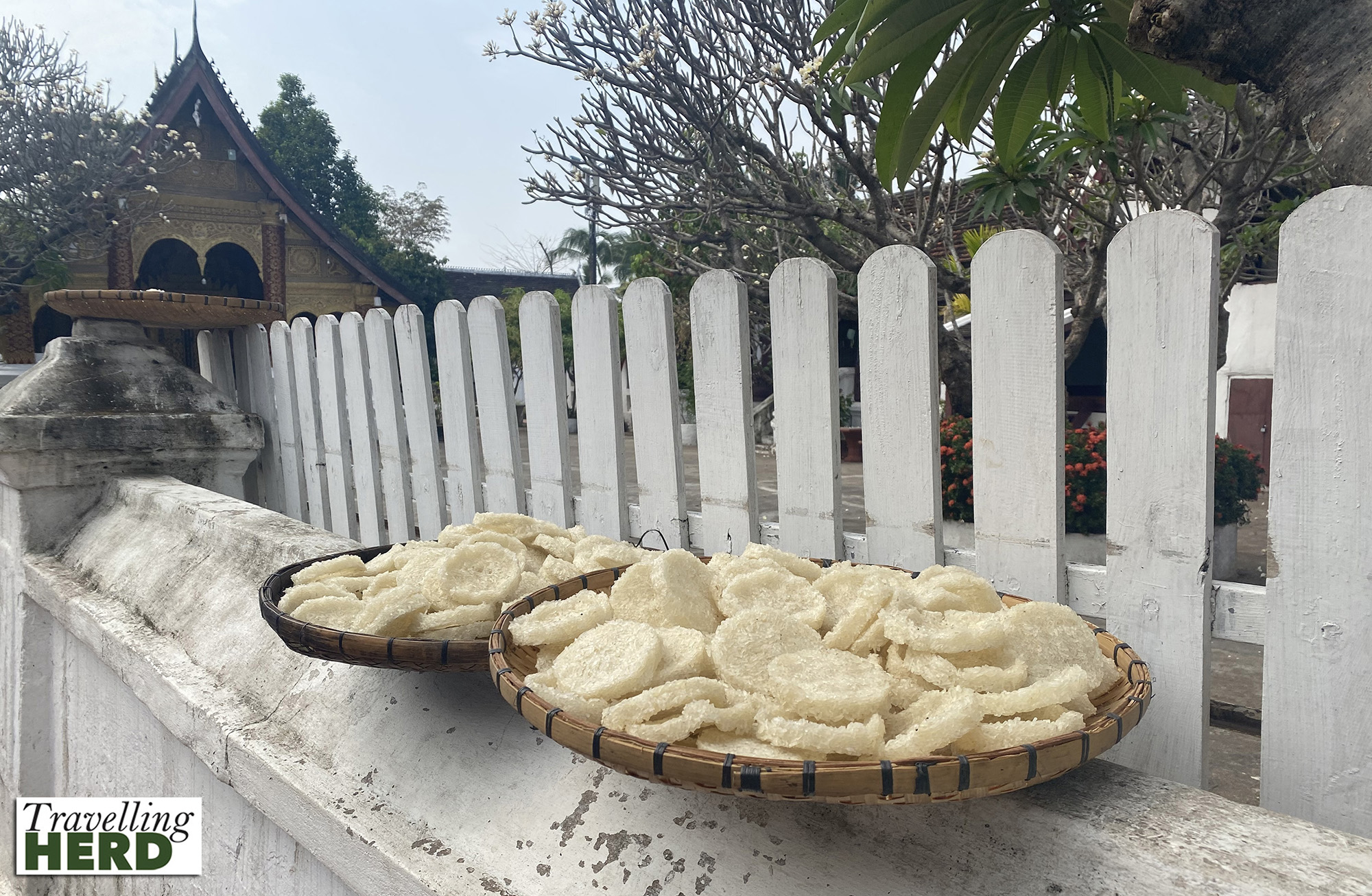
We passed the gilded splendour of Wat Sensoukharam on our way to the Royal Palace complex.
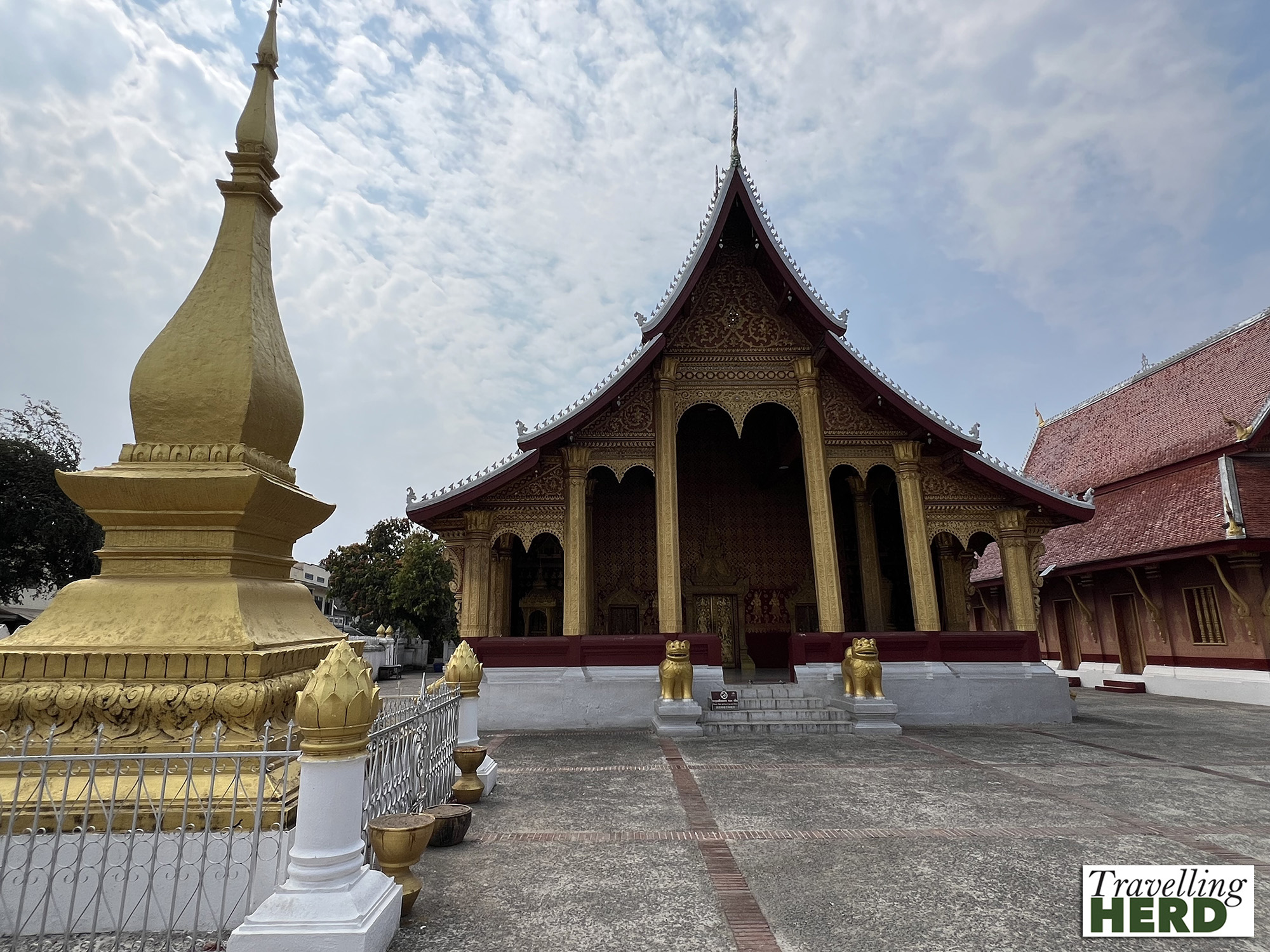
The Royal Palace complex, which now includes the National Museum, was built in 1904 and was designed by French architects combining the Beaux Arts style with traditional Lao elements such as the naga balustrades.
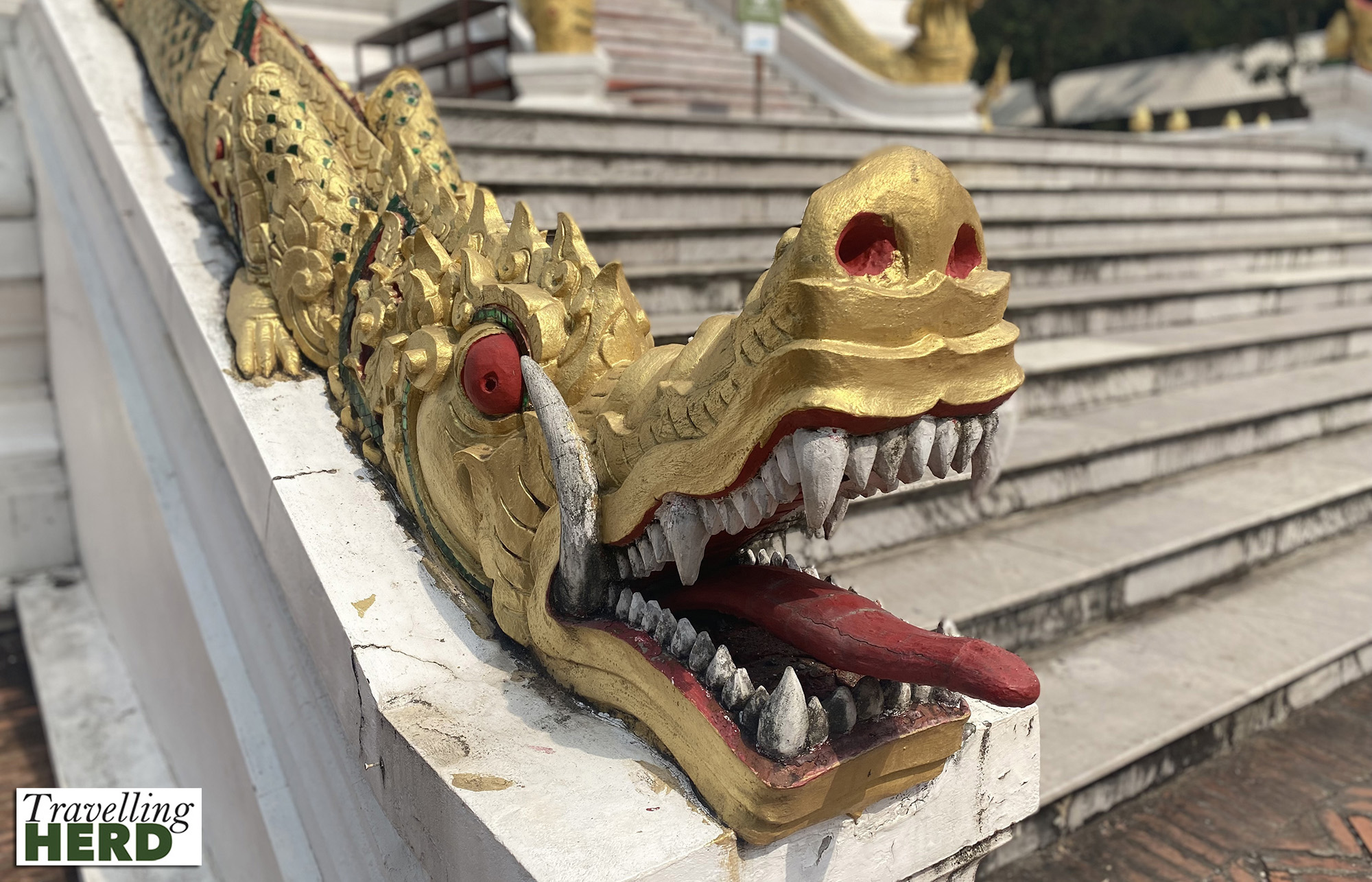
The Wat Ho Phra Bang on the left of the entrance is in keeping with the older buildings in the complex but was actually completed in 2011 to house the Phra Bang Buddha.

In 1975 when the monarchy was overthrown, the communists converted the Royal Palace into the National Museum [below]. No photography is allowed inside and the dress code is strictly enforced. Robert had to put his temple trousers on and a woman in front of us was denied entry as her dress fell above her knees. The interiors have been kept as the royal family would have used them.
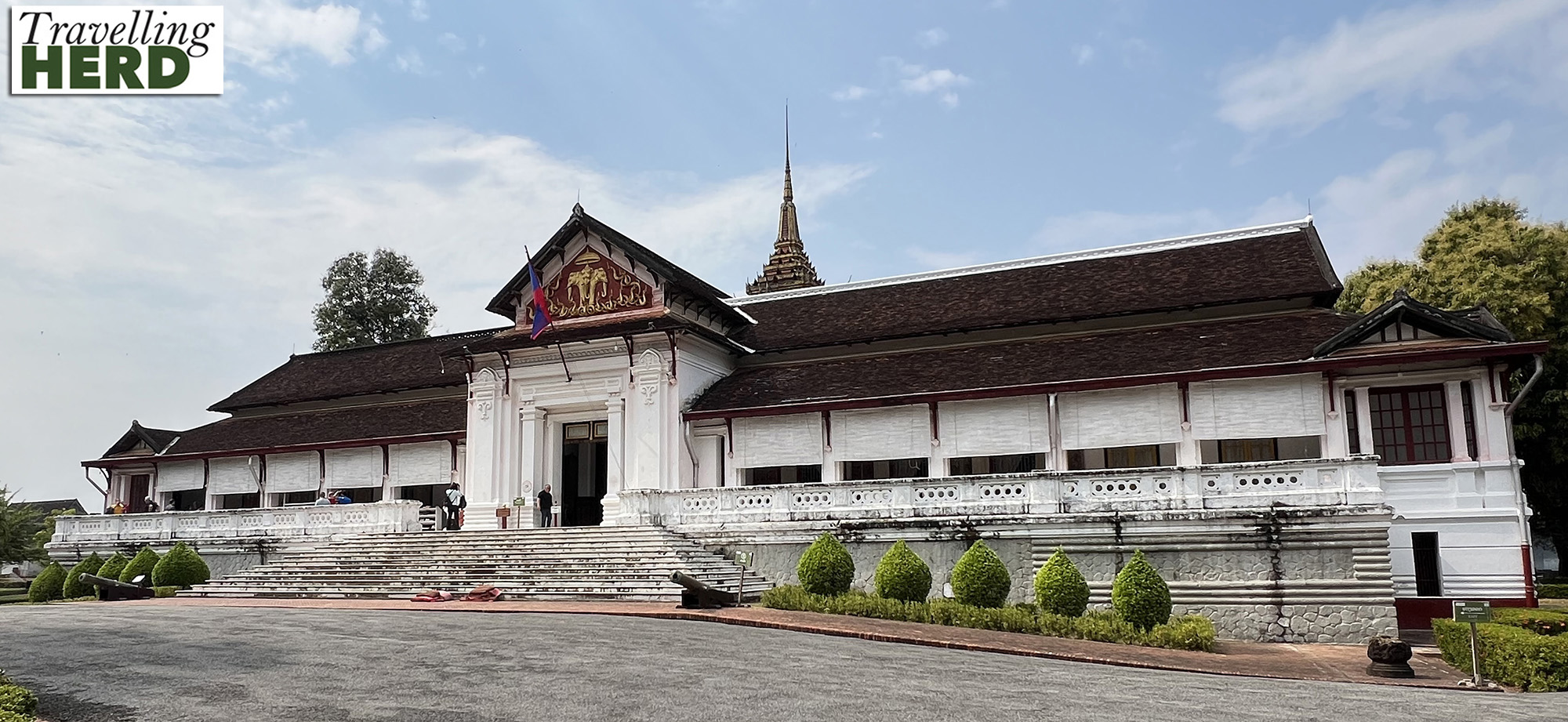
It took Matilda a while to realise that Robert’s resistance to entering temple compounds was less about seeing the sites and more about the trials of putting on his temple trousers over his shorts. She has decided that she might be allowed to see more culture in future if she lent him her sarong.
We returned to the hotel pool to cool off before heading out again to refresh ourselves with beer and sustenance but the climb had made us hungry and we forgot to take the Dish of the day photo before we started eating.
Video of the day:
Selfie of the day:
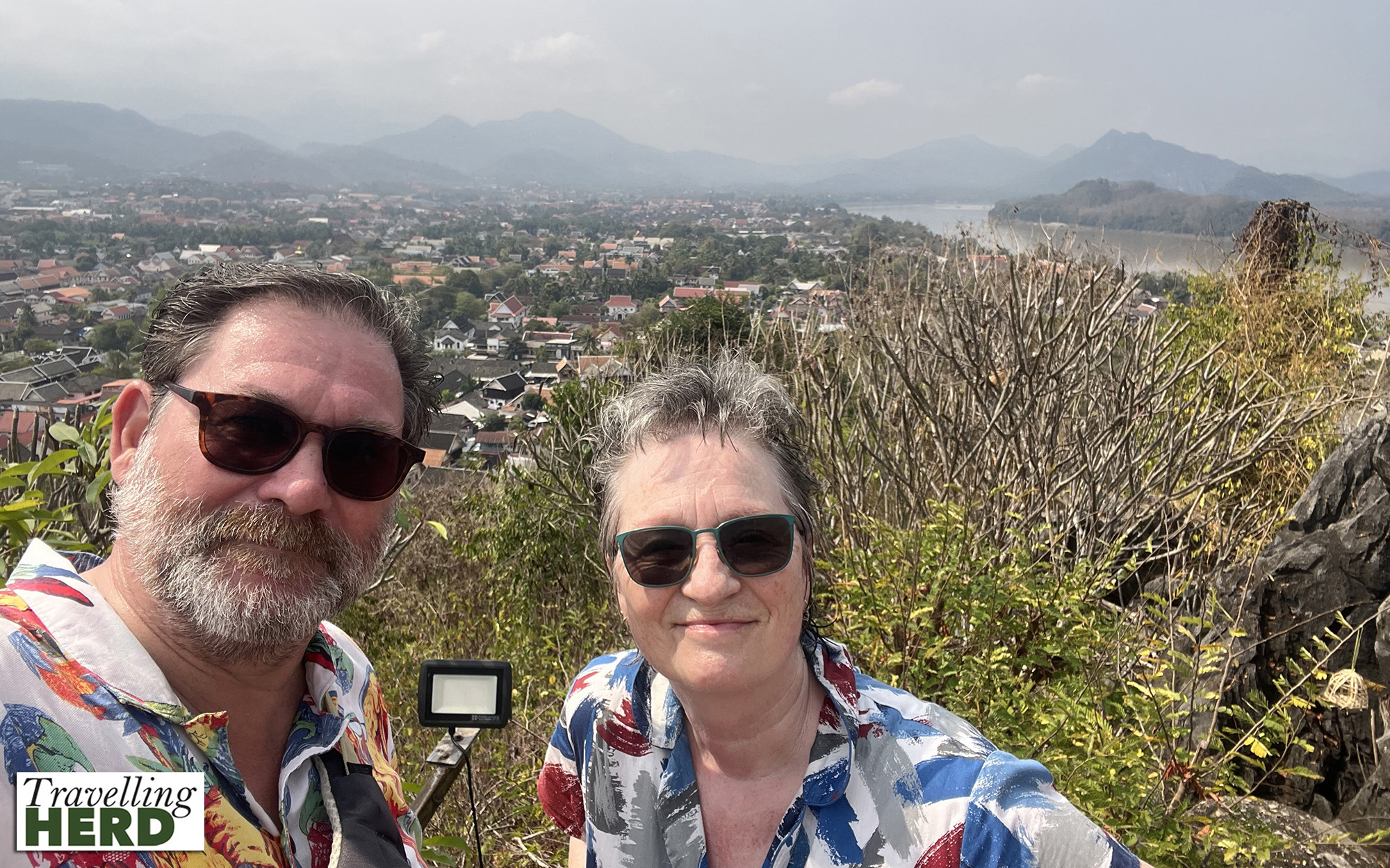
Dish of the day:
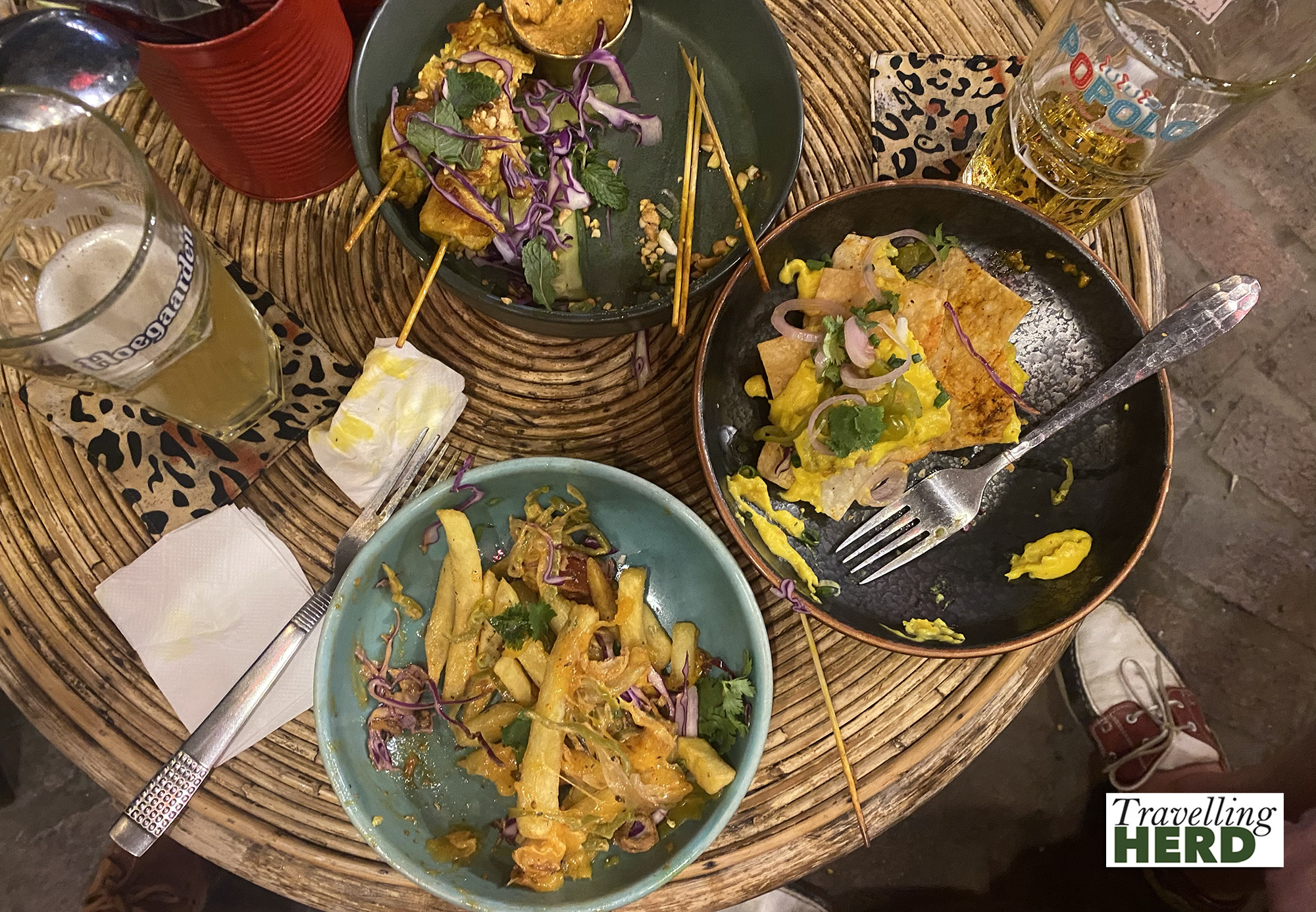
Route Map:
